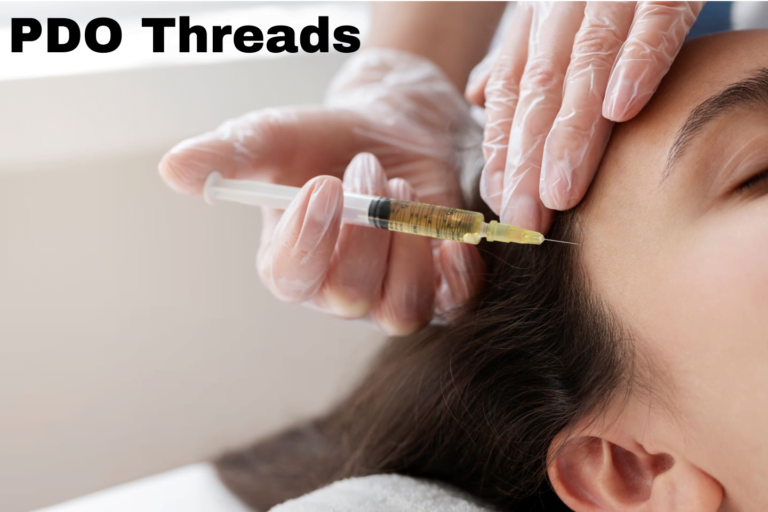Back Dimple Piercing: It Hurts or Not, the Process and Jewelry

Body piercings have long been a popular form of self-expression, allowing individuals to showcase their unique style and personality. While ear and facial piercings are widely accepted and embraced, the trend of back dimple piercing has been gaining traction as a daring and stylish choice. Also known as “dimple piercings” or “Venus dimples,” this unique form of body modification adds an alluring touch to the lower back, creating a captivating and trendy look. In this article, we’ll delve into the world of back dimple piercing, exploring their history, the piercing process, aftercare, and the cultural significance of this growing trend.
The History of Dimple Piercings
Body piercings have deep roots in various cultures throughout history. From ancient civilizations to tribal communities, people have adorned their bodies as a means of cultural expression, religious significance, or individual identity. In recent decades, the practice has evolved into a mainstream fashion trend, with piercings becoming a common form of self-expression.
Back dimple piercing, however, is a relatively recent addition to the world of body modifications. While the exact origin is unclear, it is believed that the trend gained popularity in the early 2000s. Social media platforms and the influence of celebrities have played a significant role in popularizing dimple piercings, making them a sought-after and fashionable choice for those seeking a unique way to enhance their appearance.
The Piercing Process
Getting a back dimple piercing requires careful consideration and adherence to proper hygiene and safety standards. Here’s an overview of the typical process involved:
- Consultation: Before undergoing the piercing procedure, individuals should consult with a professional piercer. During this consultation, the piercer will assess the individual’s anatomy to determine the suitability of the piercing and discuss any potential risks or complications.
- Sterilization and Marking: The piercing area is thoroughly cleaned and sterilized to minimize the risk of infection. The piercer then marks the exact placement of the dimple piercings, ensuring symmetry and alignment with the individual’s anatomy.
- Piercing Procedure: Using a hollow needle, the piercer carefully creates openings on either side of the lower back, creating the appearance of dimples. Once the needle is through, the jewelry is inserted, and the piercer secures it in place.
- Aftercare: Proper aftercare is crucial to promote healing and prevent infection. This typically involves cleaning the piercing with a saline solution and avoiding activities that may irritate or put a strain on the newly pierced area.
Do Back Piercings Hurt?
Pain tolerance varies between individuals, while anxiety or fear may have an impactful influence. Here are a few general points to keep in mind as you prepare to have your back pierced:
- Quick Procedures: Back piercings, including back dimple piercings, are generally relatively quick procedures. Each hole usually only takes several seconds to pierce. This rapidity may contribute to reduced discomfort levels during and after piercings.
- Nerve Endings: The lower back area, where back dimple piercings are often performed, contains fewer nerve endings compared to more sensitive locations of the body, which may reduce pain significantly during piercing procedures.
- Pain Scale: On an individual scale, many individuals consider back piercings moderate in terms of pain. You might experience sharp pinching or stinging sensations from getting your back pierced; keep in mind, though, that pain is an individual experience, and what one person might find tolerable might be too intense or unbearable for another individual.
- Individual Variations: While your perception of pain will depend heavily upon factors like individual pain tolerance, anxiety levels, and overall health conditions, for some, this procedure may only cause mild discomfort; others may experience more intense sensations during and after their procedure.
- Aftercare Discomfort: Once the piercing process has taken place, some temporary discomfort may ensue during its initial healing period. Soreness, swelling, and sensitivity around the area where pierced may arise; these effects are typically short-lived, with proper aftercare measures being administered to minimize them.
In order to minimize discomfort and ensure a more pleasant piercing experience, selecting a professional and experienced piercer who adheres to proper hygiene and safety protocols is vital. Furthermore, discussing any concerns or questions with them beforehand can ease anxiety and make the experience more relaxing.
Important Note: Keep in mind that pain is subjective and individual responses will differ; thus, if you’re considering getting your back pierced, you must be well informed of the procedure, adhere to aftercare instructions carefully, and consult with a professional piercer who can address any specific queries or concerns that may arise.
You may read more about:
Unveiling the Allure of Back Dimple Piercings and Beyond
Dermal Back Dimple Piercings, commonly referred to as surface piercings, involve making an opening in the skin and inserting a flat surface bar beneath its surface, producing dimple-like dimples on the lower back. Surface piercings require careful placement and aftercare to minimize migration or rejection risks.
Back Dimple Piercing Scars
Like any piercing, back dimple piercings may leave scars. Scarring is a natural part of healing that depends on factors like an individual’s healing tendencies, aftercare practices, and the skill of their piercer. In general, healed scars tend to be small and discreet, but your individual experience may differ significantly.
Infected Back Dimple Piercing
Without proper aftercare, infections may arise in back dimple piercings. Signs of infection include redness, swelling, increased pain, warmth in the area of piercing, and pus formation. If an infection does arise, it’s essential to seek immediate medical assistance; avoid taking measures yourself to remove jewelry as this could trap infection – instead, consult with either healthcare professionals or your piercer on how best to address the situation.
Corset Piercing
Nape piercings create an eye-catching effect at the back of the neck. These can be done either as surface piercings or using dermal anchors. As with back dimple piercings, nape piercings require careful placement and aftercare in order to minimize complications.
Surface Piercings
In addition to dimple piercings, surface piercings can also be performed in various areas of the body – for example, collarbone, wrist, or hip. Surface piercing involves creating an entry and exit point under the skin and embedding jewelry beneath.
Microdermal Piercings
Mes microdermal piercings involve inserting a small metal plate with an attractive decorative top under the skin for placement on various parts of the body for creative piercing placement options.
Corset Piercings:
Corset piercings involve:
- Several piercings along the spine.
- Usually, rings or barbells are laced together with ribbon or other materials to simulate corset-like visual effects.
- Creating the visual appearance of wearing one.
- They may only be suitable for short-term wear.
Important Note: All piercings carry some degree of risk, and healing experiences can vary among individuals. Proper aftercare, selecting an experienced and trustworthy piercer, and following hygiene recommendations are necessary to minimize complications and promote successful healing. If any complications or concerns arise after receiving your piercing, consult a healthcare provider or your piercer immediately for guidance.
Back Piercing Jewelry
Picking out jewelry that complements your back piercing, especially dimple piercings, is critical for both its aesthetics and comfort during healing. Here are some popular types used for back piercings:
1- Surface Bars
Surface bars are an increasingly popular choice for back piercing, including back dimple piercing. These specially-made bars reduce migration or rejection risk as their flat surface rests against the skin while beads or decorative ends remain visible on its surface.
2- Curved Barbells
Curved barbells are versatile jewelry options often utilized for various piercings, particularly those on the back. Their curve allows them to conform comfortably to body contours for an enjoyable piercing experience, while decorative ends add an attractive flair.
3- Microdermal Anchors
Microdermal anchors offer another alternative for back piercings. They consist of a small plate placed beneath the skin with an external decorative top piece to resemble an elegant bead or gemstone floating beneath. Microdermal anchors are known for their versatility and distinctive aesthetic qualities.
4- Captive Bead Rings (CBRs)
Captive Bead Rings consist of circular metal rings with removable beads or closures. While captive bead rings may not be the first choice when it comes to back piercings, some individuals may choose them for aesthetic reasons or as healing aids. Keep in mind that the movement of the ring may impact healing time.
5- Materials
Jewelry materials can have a significant impact on both healing and overall comfort, with stainless steel, titanium, and niobium often recommended as initial piercings due to their biocompatibility and corrosion-resistance properties. Some individuals may opt for gold or platinum instead – just be sure they’re high-quality materials suitable for body piercings!
6- Gemstones and Decorative Ends
Many individuals prefer jewelry with gemstones or decorative ends to add a personal flair to their back piercings. These decorative elements come in various sizes and colors, allowing for customizability based on one’s preferences.
When selecting jewelry for a back piercing, be sure to consult with a professional piercer who can offer recommendations based on your anatomy, lifestyle, and personal style. Also, ensure the jewelry fits as planned for initial piercings in order to promote healthy healing. Furthermore, following aftercare instructions provided by your piercer is essential in maintaining its health and avoiding complications with it.
You may read more about:
Cultural Significance
Back dimple piercing, like many other forms of body modification, holds different meanings for different individuals. Some may see it as a symbol of rebellion, challenging societal norms and embracing a non-conformist attitude. For others, it may be a purely aesthetic choice, a way to enhance their physical appearance and express their creativity.
In certain subcultures and communities, back dimple piercing may carry specific meanings or associations. For example, some may view it as a form of body art that signifies strength, resilience, or empowerment. The symbolism attached to these piercings is subjective and varies based on personal beliefs and cultural contexts.
Conclusion
Back dimple piercing have emerged as a bold and fashionable means of self-expression, capturing the attention of those who seek to stand out in the crowd. As with any form of body modification, it’s essential for individuals considering back dimple piercing to approach the process with careful consideration, seeking professional guidance and adhering to proper aftercare and proper skincare practices. Whether seen as a form of rebellion, an aesthetic enhancement, or a cultural statement, back dimple piercing continues to captivate and inspire individuals looking to make a unique and stylish statement with their body art.





